Autodesk 123D
 | |
 | |
| Developer(s) | Autodesk |
|---|---|
| Initial release | February 2009 |
| Stable release |
1.7
/ 30 September 2015[1] |
| Operating system |
Windows 7 OS X 10.7 or later iOS |
| Available in | English |
| Type | 3D computer graphics software |
| License | Freemium |
| Website |
www |

Autodesk 123D is a suite of hobbyist CAD and 3D modelling tools created by Autodesk. It is similar in scope to Trimble SketchUp and is based on Autodesk Inventor.[2] As well as the more basic drawing and modelling capabilities it also has assembly and constraint support and STL export. Available for the software is also a library of ready-made blocks and objects.[3]
Autodesk is also working in collaboration with three companies (Ponoko, Techshop and 3D Systems)[4] to enable users of 123D to create physical objects from their designs using 3D printing technology. [5][6]
It is currently freely downloadable with possibility of premium membership.[7]
Additional applications

The 123D suite consists of the programs:
- Catch: Creates 3D models from series of photographs taken at various angles using photogrammetry
- Sculpt+: Allows manipulation of virtual clay into a model
- Make: Allows creation of low-tech LOM-style solid models
- Design: Simplified program to create 3D models
- Creature: Allows creation of creatures in 3D on iPad
- Circuits: Virtual breadboarding and circuit design application[8]
- Tinkercad: 3D printing app
- MeshMixer: A tool for working with mesh models
Autodesk Catch
Autodesk’s Catch program is available for use on Windows on their website. Additionally, an app exists in the play store for Android, app store for iOS, and Windows Phone store. These programs use photogrammetry technology to create a 3D model out of multiple pictures taken by the user. It does this by stitching together the images with common visual structures automatically, then asking the user to help connect points that could not be determined through software. Catch can be used to create 3D models of people, places, and things. With the creation of an Autodesk account, users can also export their newly created models to further manipulate in popular 3D modeling software.
Use
To create a 3D model in Catch the user should find a subject that can be easily photographed from many angles in good light. If the user is trying to create a 3D model of something with complex features they can take close up pictures on those areas to give better definition to the resulting model. Autodesk recommends taking between 30 and 40 pictures to create a well rounded model but when photographing larger subjects the user can take up to 70 pictures to give greater detail to the model. Once all of the images are saved they are uploaded to autodesk servers so they can be stitched together and a 3D model can be made. This process can take several minutes. Finally after they model is created it is downloaded to the user's device for viewing and editing. The 3D models created by Catch can be used in a number of ways such as 3D printing.
Sharing
Catch offers users the ability to view, comment on, rate, and download other users models. Likewise any user of the app has the option to share their creations with the autodesk community via Autodesk's built-in sharing functionality.
Known issues
Autodesk's Catch software is free and allows users to create 3D models with ease with only the use of a camera or smartphone. This convenience comes at cost however and means a lack of functionality pertaining to detail and reliability. Since Catch processes the user’s images on an Autodesk server instead of locally on the user's computer an internet connection is required to use any of the functionality it offers. Autodesk servers may be unresponsive at times, making it impossible for users to access their creations or work on new models. Just the data reaching the server does not ensure a good model.
When creating a model, the Catch software can have trouble stitching together images that feature reflective or transparent surfaces, even with the user's assistance. Catch can also fail to properly create a model if the subject moves or changes during photoshoot. Models featuring small parts or hair and fur can also cause problems for the Catch software because the mesh created does not allow for such level of detail.
Autodesk MeshMixer
MeshMixer is a tool with several functions for manipulating 3D meshes. Its main use is for tidying up a 3D model, for example to remove areas that are not wanted, to fill holes. to sculpt the shape or to correct its orientation prior to 3D printing.
See also
Blender - a comprehensive free and open-source 3D package
MeshLab - a free and open-source tool similar to MeshMixer, extensively used by the scientific community
References
- ↑ Melantoni, Guillermo. "123D Design 1.7 – A really solid release". Autodesk 123D. Autodesk, Inc. Retrieved 2016-02-05.
- ↑ Autodesk 123D solid modeling software hits beta, hobbyists cheer $0.00 pricetag Engadget
- ↑ Autodesk 123D Beta Available to Public
- ↑ Autodesk 123D: Manufacturing Gets Personal
- ↑ Manufacturing Gets Personal: Autodesk 123D Now Available for Free Download
- ↑ Democratizing Design: Autodesk’s CEO Carl Bass Announces 123D
- ↑ Autodesk 123D Membership Options
- ↑ 123D circuits announcement.